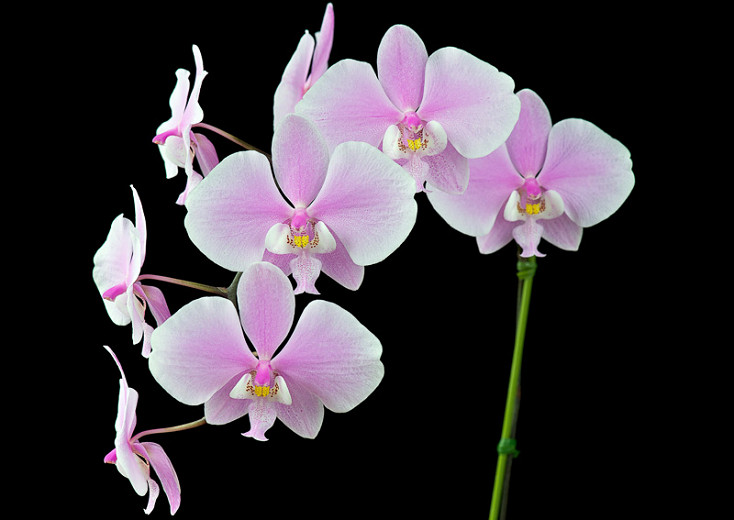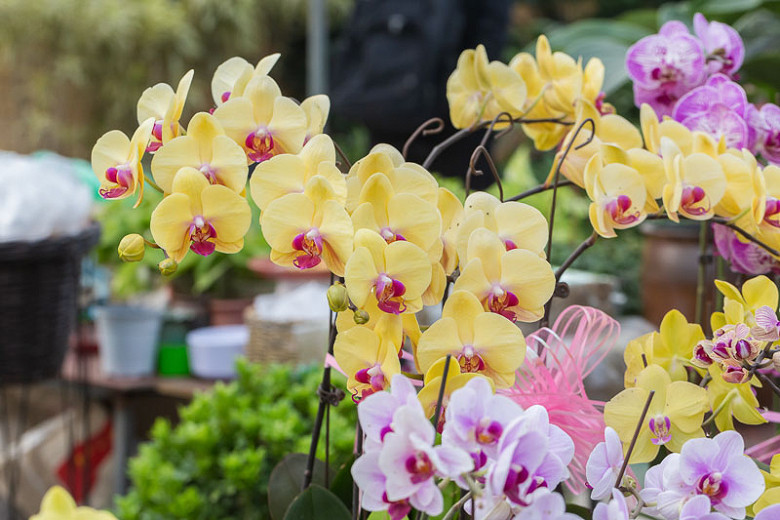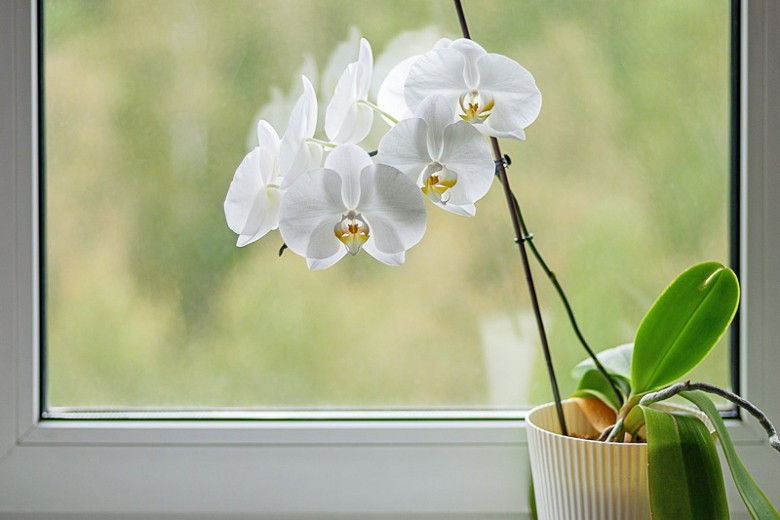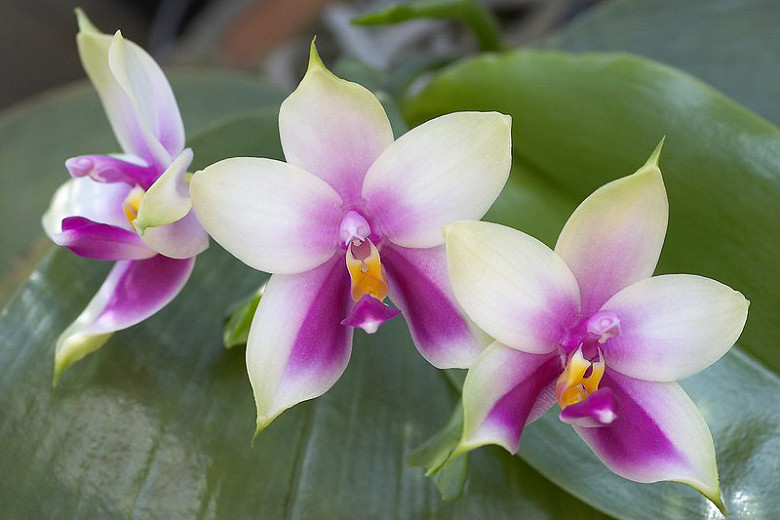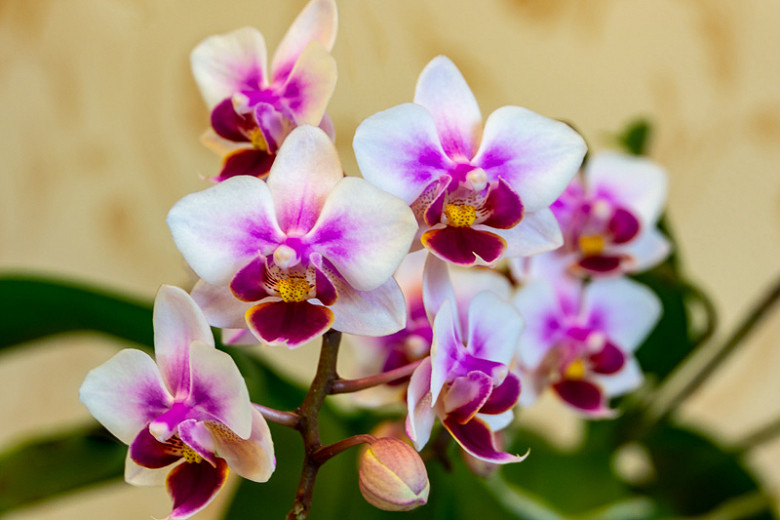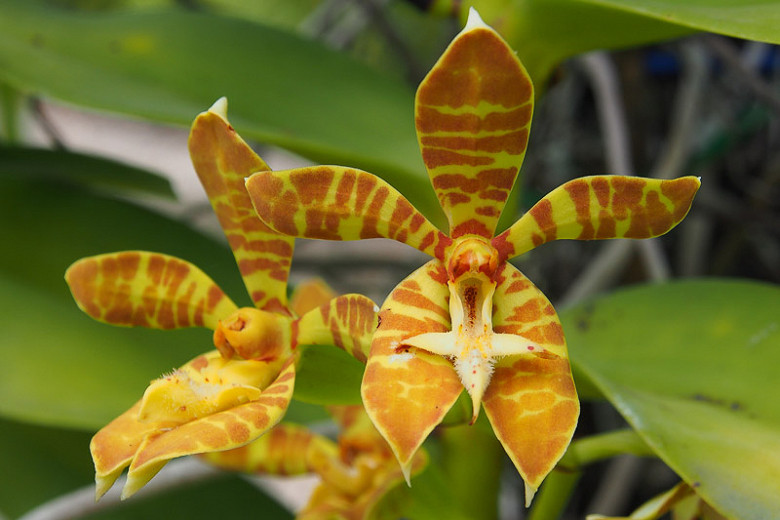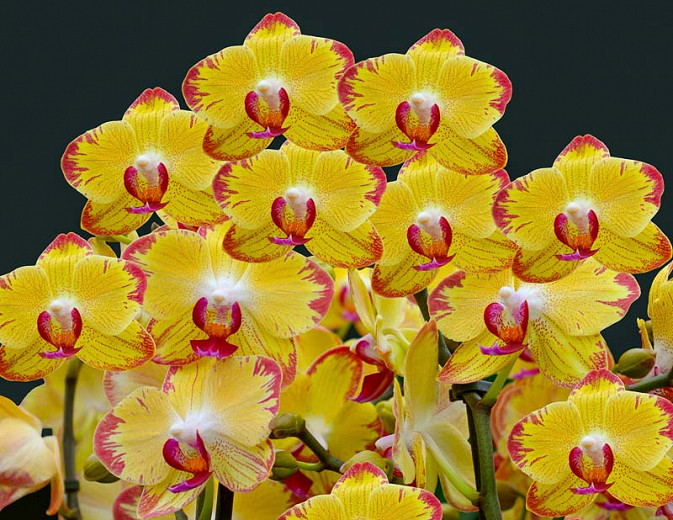Phalaenopsis schilleriana (Moth Orchid)
Phalaenopsis schilleriana (Moth Orchid) is an evergreen, epiphytic orchid boasting up to 250 fragrant pink, mauve, or white flowers, up to 4 in. across (10 cm). Blooming in the spring, the showy and delicate flowers are borne in long sprays on arching to pendant stems, up to 36 in. long (90 cm). Most flowers have a delicate rose fragrance when in bloom. As an added bonus, the beautiful elliptic leaves, dark green mottled with silver gray above, flushed with purple underneath, make for an attractive houseplant even when not in flower. Native to the Philippines, Phalaenopsis schilleriana can be found growing high on trees in rainforests at elevations up to 1500 ft. (457 m). Phalaenopsis schilleriana may be the most popular species in the genus. It is among the easiest orchids to grow and is nearly as tolerant of a wide range of conditions as hybrids. An excellent choice for the home or greenhouse.
- Grows up to 24-36 in. tall (60-90 cm).
- Grow in an open bark-based compost and position with good indirect light. An east or west window would be ideal.
- Needs a minimum night temperature of 70°F (21°C) and a daytime temperature of 85°F (29°C).
- Fluctuating temperatures can cause bud drop on plants with buds ready to open.
- Maintain high humidity (80%) for most of the year by setting the plant on a tray of gravel, partially filled with water, so that the pot never sits in the water.
- Water regularly throughout the growing season. Reduce watering slightly during the winter. Do not let the roots dry out completely. Avoid letting the plant sit in water. Mist the plant lightly in summer.
- Water only in the morning, so that the leaves dry by nightfall. This will prevent rot.
- Feed regularly in the growing season with proprietary orchid fertilizer.
- Propagate by division. Cuttings or offshoots may be rooted successfully when roots are 1 in. long (2.5 cm).
- Once the flowers have faded, cut the flowering stalk back to just above the second node (joint) visible beneath the spent flowers. A new flowering side shoot may develop.
- Phalaenopsis can be repotted at any time of year. The best time to repot is when new roots with green tips emerge at the base of the plant.
- To repot, remove all the old medium from the roots, snip off any diseased or dead roots, and spread the remaining roots over a handful of medium in the bottom of a new pot. Fill the rest of the pot with medium, working it among the roots, so that the junction of the roots and the stem is at the top of the medium. Gently ensure the compost is pressed down firmly around the perimeter of the pot. Drain the plant thoroughly and do not allow it to sit in water.
- Generally disease free. Keep an eye out for aphids, glasshouse red spider mites, and mealybugs.
- Native to the Philippines, on the island of Luzon to the south of Quezon City and the eastern coasts of nearby islands.
Tip for reblooming
- If a plant is large and healthy but does not produce flowers in a reasonable time, then reduce the temperature by 8°F (5°C) for four weeks, and a flower spike will usually develop.
Requirements
| Hardiness | 10 – 12 |
|---|---|
| Plant Type | Orchids |
| Plant Family | Phalaenopsis- Moth Orchids |
| Exposure | Partial Sun |
| Season of Interest | Spring (Early,Mid,Late) |
| Height | 2' – 3' (60cm – 90cm) |
| Water Needs | Average |
| Maintenance | Average |
| Soil Drainage | Well-Drained |
| Characteristics | Fragrant, Showy, Evergreen |
| Native Plants | Australia |
| Garden Uses | Patio and Containers |
